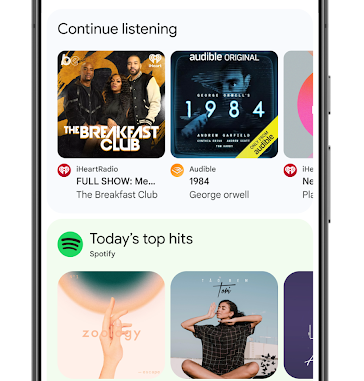


The Android development team is officially launching Collections, which is a new surface that groups together content from multiple installed apps in themed widgets in the Play Store.
It was first announced as a developer preview at Google I/O in May, with Mekka Okereke, general manager for Apps on Google Play, saying “this new surface will automatically organize the best and most relevant content from across apps already installed by users on their Android phones.”
The content is grouped into “intent-oriented spaces,” which include Watch, Listen, Read, Shop, Food, Social, Travel & Events, Health & Fitness, and Dating.
Content contains deep links to apps, so that users can be taken directly to the app to complete a user journey, such as making a purchase through Shop, listening to a recently played album or audiobook in Listen, or reordering a recent meal in Food.
To give app developers more control over what content is shown, they can create up to five recommendation clusters that can be personalized based on user behavior and organized by themes, such as new releases, price drops, or a user’s favorite topics.
Collections will also highlight hero content in a featured cluster, which is a larger UI element, and can be used to display top promotions or deals.
Collections can also prompt users to sign-in to an app if it is installed but not logged into. In addition, it will also highlight content from uninstalled apps to encourage users to download the app.
To get started with Collections, Android developers will need to integrate their app with the Engage SDK. According to the company, over 35 top apps have already integrated with it, including Adidas, Amazon Prime Video, Audible, Best Buy, iHeartRadio, Nextdoor, Spotify, Shopify, and Walmart.
You may also like…
Android 15 Beta 3 introduces improvements to passkey user experience

